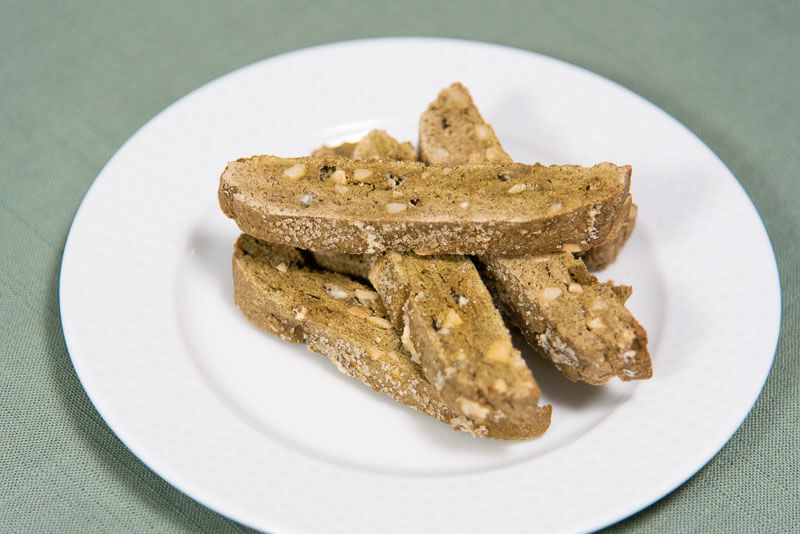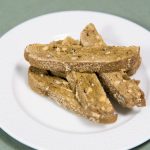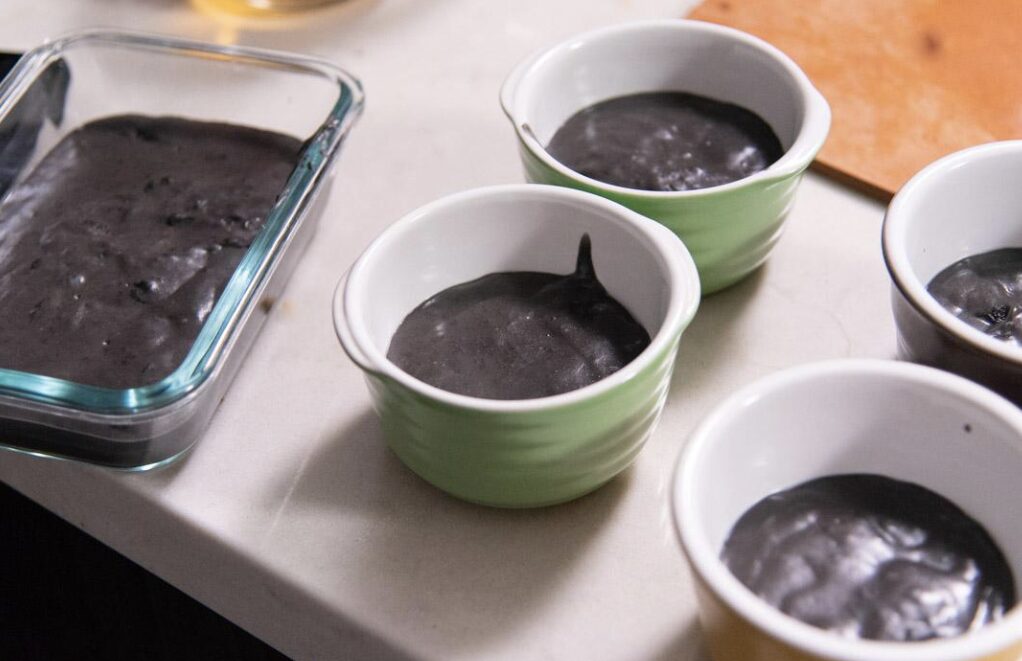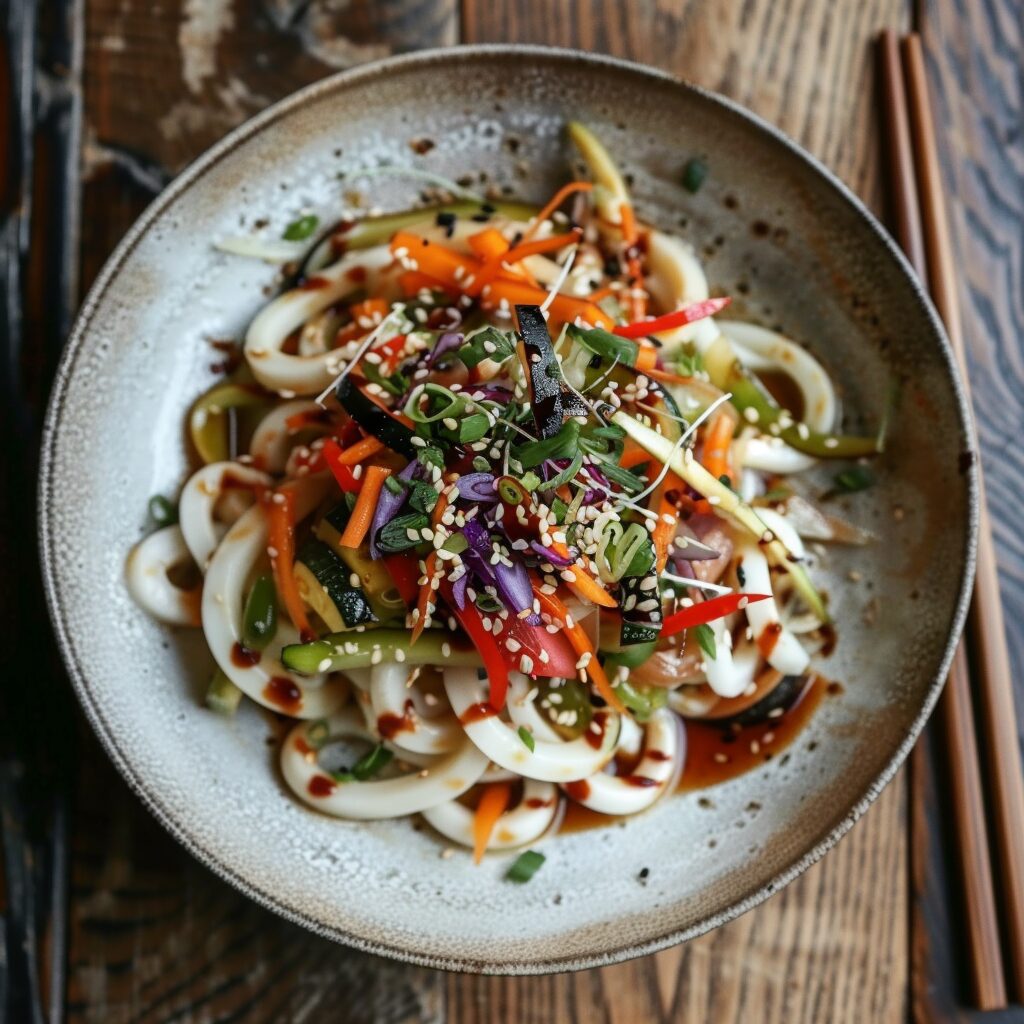Matcha biscotti are one of the best ways to enjoy matcha for breakfast. Especially if you’re one who doesn’t like things overly sweet first thing in the morning. Plus, because the biscotti is bite size and portable, they’re perfect for on the go and they of course are filled with a delicate matcha

Matcha cookies don’t have to be that sweet
and that’s exactly how i like my matcha biscotti.
what about you?
yes there’s a time when i enjoy a sweeter matcha cookie, but when i make biscotti, i go very conservative with the sugar.
and what makes this biscotti special, is that it uses whole wheat pastry flour!
so the texture is a little different.
if you didn’t know, pastry flour, in general has less protein than all purpose flour and more than cake flour.
and that goes for both whole wheat or unbleached white.
so if you’ve never used it before, try it and see how you like it.
it’s unique in it’s own way!
as for the biscotti flavorings, you can add white chocolate chips or nuts like i did, for additional textures and flavors.
and yes, white chocolate chips and matcha are a match made in heaven🌞
all you need is a nice hot cup of coffee and you’ll get a double dose of caffeine to kick start your day!!

Why would you want to make these matcha biscotti?
here are a few reasons for you to consider
- you’re busy in the morning and usually skip breakfast
- you usually eat breakfast but are looking for something new and tasty
- you bought a lot of matcha powder and don’t know what to do with it
- you’re looking for a portable edible cookie, that isn’t that sweet but tastes good
- you’ve never made biscotti and want to try it or you’ve made it and you know how much better homemade biscotti can be as compared to anything storebought (that comes wrapped in plastic)
did i miss any?

Biscotti Making tips
A few helpful techniques to make this and your other biscotti creations a success
- If you have a sticky batter use plastic wrap or a little water on your hands to help you shape the log
- Use parchment paper if you have it, its the easiest way to clean up and you don’t have to use spray! (Alternatively, a baking mat/sheet that is greased and floured works too)
- Use a bread (serrated) knife to cut the log after the first bake. You’ll get cleaner looking cuts than using a Chef’s knife
- When cutting, make sure to saw as much as possible, especially when there are nuts! Otherwise, you’ll get small pieces that break off. (especially if you are working with almonds, which are relatively hard nuts!)
- If you want a bakery like look, you can cut your biscotti at an angle (30-45 degrees)
- After baking the second time, transfer the biscotti to a wire rack to cool. If you don’t, they will steam each other and may not be crunchy!
- Store airtight in glass and they will stay nice and crunchy at least for a week (we usually eat them all so can’t say how long they last after a week!)
if you’re more of a visual person, here’s a short video i put together showing how to make the matcha biscotti with white chocolate and slivered almonds 🍵
Have you seen any of my other matcha recipes? here are a few more ideas like matcha cookies, matcha ice cream, matcha cupcakes!
Don’t have matcha or matcha isn’t your thing?
Here are two of my other favorite biscotti recipes –
PrintMatcha biscotti (with whole wheat pastry flour)
Matcha biscotti are one of the best ways to enjoy matcha for breakfast. Especially if you’re one who doesn’t like things overly sweet first thing in the morning. Plus, because the biscotti is bite size and portable, they’re perfect for on the go and they of course are filled with a delicate matcha tea flavor which any matcha fan can appreciate.
- Prep Time: 10 minutes
- Cook Time: 40 minutes
- Total Time: 50 minutes
- Yield: 14 people 1x
- Category: Breakfast
- Cuisine: New American
Ingredients
- 2 cups whole wheat pastry flour
- 1/2 cup brown sugar
- 2 Tbsps matcha powder
- 1/2 tsp baking powder
- 1/4 tsp salt
- 1/2 cup almonds (slivered)
- 1/4 cup white chocolate chips
- 3 large eggs
- 2 tsp vanilla extract
- 2 Tbsps turbinado sugar (for sprinkling)
Instructions
- Preheat oven to 350°F. Whisk together flour, sugar, matcha, baking powder, and salt in a large bowl. Stir in almonds and white chocolate chips
- Add eggs and vanilla. Use a stand mixer with whisk until a sticky dough forms, about 2 minutes. (If a bit crumbly just remove whisk and knead a minute or two with your hands)
- Use a baking sheet lined with parchment paper and shape dough into a rounded rectangle about 1/2in. thick and top with turbinado sugar if desired.
- Bake in the center rack at 350°F about 20 minutes.
- Remove log from oven; allow to cool 10 minutes and transfer to a cutting board and cut into 1/2in. pieces.
- Lower oven temperature to 300°F and return slices to baking sheet cut side down and bake at 300°F 20 minutes,
- After 20 minutes, remove and cool completely on a wire rack.
- Store in an airtight container and eat within 2 weeks!








Konnichiwa! (Hello!) I'm Pat Tokuyama, a Japanese tofu cookbook author, who travels for music, food, and adventure. If you like Japanese tea, checkout some of the newestorganic japanese tea, matcha bowls and noren and more!
** Curious about the Plant Based Japanese Cooking Club? ** Learn more here!